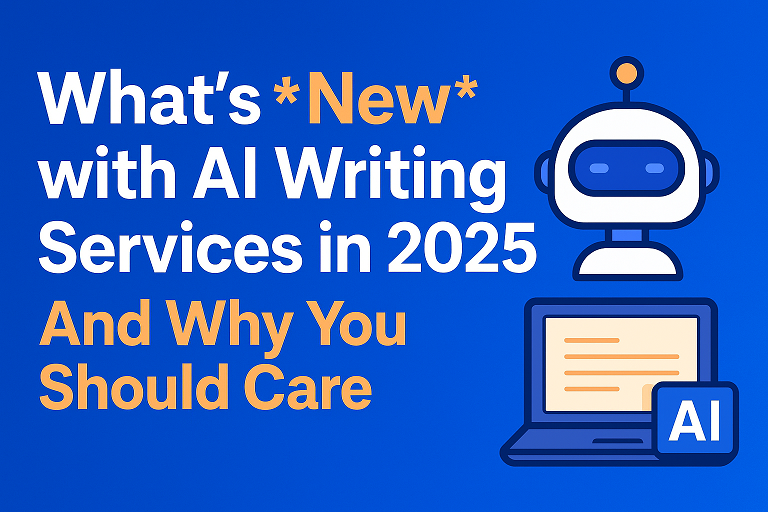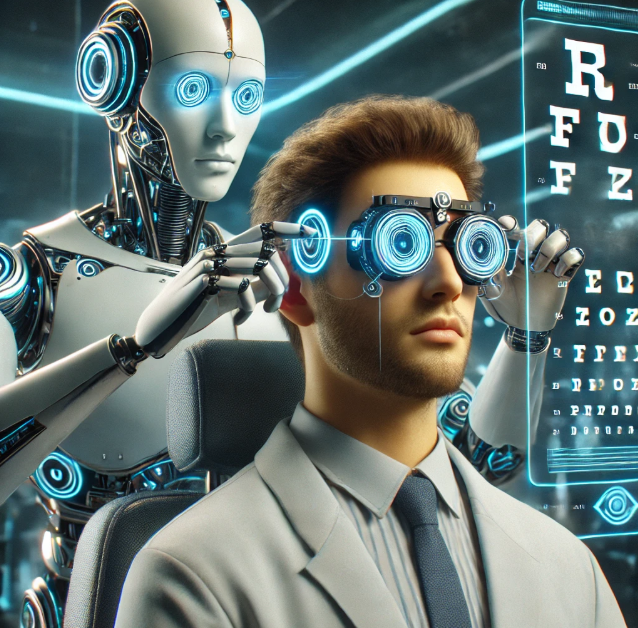Introduction: The AI writing services revolution is heating up
In 2025, AI writing services are no longer fringe tools or experimental toys — they’re becoming central players in content marketing, journalism, education, and creative work. This year brings dramatic upgrades: AI writing services are growing more context aware, more multimodal, more transparent (sometimes), and more tightly integrated into everyday workflows. If you want to stay ahead, now is the time to dig in.
In this article, we’ll explore what’s new with AI writing services in 2025 — from breakthroughs and business shifts to risks and future directions. Because the more you understand AI writing services, the better you can harness them — or guard against their pitfalls.
The big picture: Why AI writing services are exploding in 2025
Market & adoption surge
By 2025, 90% of content marketers plan to use AI to support content marketing.
In usage breakdowns: 71.7% of marketers will use AI for outlining, 68% for ideation, 57.4% for drafting.
Many businesses now see AI writing services not as assistants but as parts of core infrastructure — scaling content output without scaling headcount.
In technical writing, AI is becoming essential to the workflow, rather than optional.
These stats underscore that AI writing services are no longer niche tools — they’re becoming mission-critical for many content-driven organizations.
The pressure from competing media forms
As AI enables faster content generation, the competition intensifies. Brands and writers must compete not just on volume, but on originality, voice, insight, and accuracy. In other words: AI writing services can help produce, but they can’t (yet) guarantee value.
What’s New with AI writing services in 2025 — Key trends & innovations
1. Multimodal capabilities: text + voice + image + video
One of the biggest shifts is that AI writing services are no longer just about text — they’re becoming multimodal platforms.
Some tools now allow embedding or generating images, video, or voice simultaneously with text, blurring the line between “writing service” and “content platform.”
For example: an AI writing service may generate not just a blog post, but also suggest hero images, embed short video snippets, or produce an audio narration in a coherent voice fit to the tone.
This evolution means content teams can streamline workflows: instead of handing off text to a designer or video team, an AI writing service may begin the multimedia generation process automatically.
2. Context-aware and adaptive writing
In 2025, AI writing services are increasingly context-sensitive. They can:
-
Maintain long-range context across longer documents or series of posts
-
Adapt tone, style, and voice more precisely based on brand guidelines or prior content
-
Incorporate external data (live or updated) to keep content timely
-
Recognize when to pause, ask for human input, or flag uncertainty
These improvements help AI writing services produce more coherent, brand-aligned, and defensible content — reducing one of the key criticisms of earlier generations.
3. Real-time collaboration & co-writing
AI writing services are becoming collaborative partners, not solo engines.
Some services now allow real-time co-editing: humans and AI writing modules working side-by-side within the same document.
Version tracking shows what the AI changed, rolled back, or suggested.
Feedback loops allow users to “teach” or correct the AI so that over time it better emulates their voice.
Multiple agents — research, drafting, SEO optimization, fact-checking, and style-checking — can coordinate inside one writing service.
4. Transparency, auditing & ethical safeguards
A major development in 2025 is increased attention to transparency, source tracking, and auditing in AI writing services.
Some platforms now annotate or footnote where content was generated or inferred, or where uncertainty exists.
Others provide audit logs showing how the AI arrived at certain phrasings or decisions.
Ethical AI writing policies are becoming more visible: “show me the reasoning,” “flag hallucinations,” or “cite sources.”
Users demand that AI writing services respect copyright, attribution, and content provenance more strictly.
5. Specialization & vertical AI writing services
In 2025, a big push is toward niche or vertical AI writing services — rather than generalist ones.
Tools specialize for legal, medical, scientific, technical, SEO-heavy, or creative writing.
Domain-adapted models include built-in knowledge bases that understand industry glossaries or compliance rules.
Hybrid human + AI services let AI handle bulk drafting while humans polish domain-specific nuance.
6. Integration into tools & platforms
AI writing services are embedding more deeply into everyday software.
Word processors, CMSs, note-taking apps, and even code editors now feature integrated AI writing modules.
APIs let developers embed features like “draft paragraph” or “rewrite section” directly into custom tools.
Plugins allow AI writing services to be used seamlessly from email, Slack, or browsers — making them part of your natural workflow.
7. Smarter content optimization & SEO features
AI writing services increasingly integrate SEO, topic modeling, and trend analysis into generation.
Some suggest LSI keywords, internal links, metadata, or structured data automatically.
Dynamic content refresh features monitor old posts and propose updates.
Predictive analytics estimate how a piece might perform or rank.
AI writing services are evolving from mere writing engines into full-fledged optimization systems.
Top AI writing services to watch in 2025
Here are a few AI writing services making waves in 2025:
-
Jasper AI — still strong in the long-form marketing space.
-
Writesonic — excels at versatility for blogs, ads, and SEO content.
-
Claude (by Anthropic) — delivers nuanced and conversational tone.
-
Frase, Byword AI — recognized for advanced SEO features.
-
Overleaf AI Assist — focuses on scientific and technical writing.
Each of these AI writing services pushes deeper into integration, transparency, or domain adaptation.
Benefits & challenges of using AI writing services in 2025
Major advantages
-
Speed & scale — generate more content, faster.
-
Cost efficiency — reduced dependency on large writing teams.
-
Ideation support — overcome writer’s block and find new angles.
-
Consistency — maintain brand tone and structure.
-
SEO optimization — built-in visibility tools.
-
Accessibility — empower non-writers to create professional content.
Core challenges & risks
-
Hallucinations — AI writing services still make factual errors.
-
Generic output — risk of repetitive or shallow phrasing.
-
Ethical & copyright issues — unclear data sources or reuse.
-
Academic misuse — AI-generated essays challenge originality.
-
Skill erosion — overreliance weakens human writing skills.
-
Bias — AI can unintentionally reinforce stereotypes.
Use-case spotlight: How writers and teams use AI writing services in 2025
Content marketers use AI writing services for scalable blog and SEO production.
Technical writers employ AI tools for summarizing research and formatting.
Novelists treat AI writing services as brainstorming partners.
Educators cautiously integrate AI writing services for outlining or feedback.
Small businesses leverage AI writing services to stay competitive with limited budgets.
How to choose & implement an AI writing service in 2025
When selecting AI writing services, evaluate:
-
Transparency and auditability
-
Domain adaptation
-
Integration options
-
SEO & data features
-
Collaboration capabilities
-
Cost model
-
Quality controls
Implementation tips:
Start small with pilot projects.
Always maintain human review.
Feed the AI with your style and brand documents.
Track accuracy and output quality.
Establish ethical guidelines and disclosure rules.
Predictions: What’s next for AI writing services beyond 2025
Expect to see:
-
More proactive and autonomous AI writing agents
-
Hybrid human + AI review models
-
Stronger regulation and watermarking
-
Ultra-specialized micro-models
-
Convergence with AI video and design tools
Final thoughts: Embrace wisely, not recklessly
In 2025, what’s new with AI writing services is transformational. They’re shifting from assistants to collaborators, from generic to personalized, from opaque to auditable.
Used responsibly, AI writing services can supercharge creativity and productivity. Misused, they can dilute authenticity and truth.
AI writing services won’t replace human writers — but humans who learn to master AI writing services will replace those who don’t.
Further Reading & References
-
Siege Media — AI Writing Statistics 2025
-
Grammarly — AI Trends 2025
-
CleverType — Top 5 AI Writing Trends Professionals Can’t Ignore in 2025
-
Authority Hacker — Best AI Writing Software in 2025
-
FocusCopy — 7 Red Flags of AI Writing to Watch for in 2025
-
Newswise — Overleaf Launches New AI Writing Tools for Researchers
-
Visme Blog — Best AI Writing Tools for 2025




